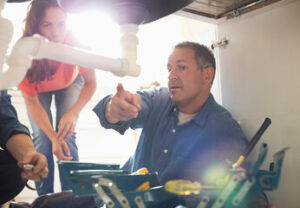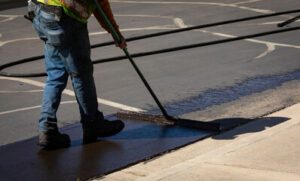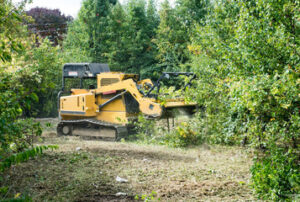A home’s ceilings serve several vital functions. They protect a building from the elements, provide insulation, and add to its aesthetic appeal. But ceilings also face a number of common problems, such as cracks and water damage.
Hairline cracks typically result from settling or temperature fluctuations, while larger cracks indicate underlying issues. Cracks accompanied by sagging often signal serious foundation concerns and should be addressed immediately. Contact Ceiling Repair Perth now!

Over time, nearly all homes will develop cracks in the ceiling. Some of these will be cosmetic in nature while others may signal a bigger problem such as foundation shifting or settling. Examining the shape, size and location of the crack can give homeowners valuable insight into possible problems and solutions.
Fine, straight cracks in a ceiling are usually not a cause for concern, as they can simply be the result of a joint that wasn’t taped properly. However, they can still be unsightly and should be repaired.
Wider cracks that appear horizontally along the ceiling are usually a sign of a structural issue. These often require professional attention to fix and will need a thorough inspection from an expert.
Larger cracks that extend from the ceiling to the walls, especially when accompanied by sagging, are also a warning to take action. These types of cracks indicate that the foundation has shifted or is suffering from serious damage, which needs to be addressed immediately to ensure the safety and stability of your home.
Discoloured ceiling cracks are another clear indicator of a serious problem that should be addressed right away. They are often caused by water damage, and if they are left untreated can lead to mold growth, which can affect indoor air quality.
Before beginning any work on a ceiling crack, it’s a good idea to lay down a piece of tarp or plastic to catch any paint or mud that might drop during the repair process. In addition, it’s a good idea to remove any furniture that you don’t want to be covered in dust or paint as well.
Once the sagging and cracks have been repaired, it’s important to sand the patched areas down. Once the patch is smooth, it should be primed and painted to match the rest of the ceiling. If you don’t have a matching color of paint lying around, it can be easily purchased from a local hardware store or home improvement center. When painting, it’s best to use a longer trowel than what you would normally use for wall applications as this will help fill in the low spots.
Water Stains
Water stains in the ceiling are more than just an eyesore; they’re a sign of serious structural damage and potential mold growth. Water stains occur when the moisture in the ceiling material dries, leaving behind discolored mineral deposits. This often happens after a roof, heating, or plumbing leak seeps through the ceiling and evaporates, leaving a wet spot and then dried, discolored mineral deposits. Water stains on the ceiling need to be addressed as soon as possible to prevent additional staining and to avoid structural and electrical damage. Covering up water stains with a fresh coat of paint may make the area look better, but it will not address the underlying problem and can lead to additional problems down the road.
The first step in addressing water stains on the ceiling is to find the source of the problem. Depending on the cause, different solutions need to be applied.
If the stain is in close proximity to a chimney, attic vent, skylight, or dormer, it’s likely that the leak is coming from the roof. Stains near these areas are also commonly caused by condensation, which can build up if the home has poor ventilation or is improperly insulated.
Keeping up with routine inspections of the property and identifying potential problems early can minimize repair costs and ensure a healthy indoor environment. Using a dehumidifier in high humidity areas can help reduce the risk of moisture damage to the ceiling and prevent the formation of water stains. And painting over a water stain with a stain-blocking primer is an effective way to cover the mark and prevent it from reappearing. Be sure to use a primer specifically formulated for water stains in order to achieve the best results. Look for one that says ‘stain block’ or ’stain sealant’ on the packaging.
Wood Rot
Wood rot can be both unsightly and dangerous to your home’s structure. It can eat away at the surface of timber, making it soft and spongy, and cause crumbling or cracking. It can also eat through plaster and wallpaper, exposing the wood beneath to further damage. You can repair rotted timber, but you must first identify the problem and fix it before it spreads further. Depending on the extent of the rot, you may need to replace the affected area. A good way to test for rot is to push a screwdriver into the wood. If it goes in easily, it’s probably rotting.
Wet rot is common in areas exposed to water, like window sills, door frames, and the bottom edges of wooden siding. It can be spotted by dark colouration and a musty smell. It’s important to catch wet rot early, as it can easily damage plaster, wallpaper, and carpeting. To repair rotted timber, remove as much of the affected area as possible and treat it with a fungicide. This will prevent the fungus from spreading to fresh, undamaged areas. You can also use an epoxy consolidant, which will strengthen the wood fibers and bond with unaffected areas of the timber.
Dry rot is more serious than wet rot because it can travel between timbers and through plaster, and affect the integrity of the entire structure. It’s common in exterior wood, particularly window sills and door frames, as well as interior flooring, plaster, and drywall. It can be spotted by bubbling, blistering, and peeling paint. The most obvious symptom is a brown discolored appearance that looks like the wood is drying out.
To repair dry rot, open up the affected area and treat with a fungicide. Clean the surrounding surfaces and sand the repaired area smooth. You can also use wood filler or epoxy to seal the hole, and apply a high-quality primer or paint to protect it from future damage. It’s important to address the source of moisture, as well, to prevent rot from returning. This might include fixing roof leaks, repairing gutters, or addressing issues with ventilation.
Termite Damage
A termite infestation in a home can cause serious structural damage, which can lead to collapsed walls and ceilings. Termites are voracious wood-eating pests that can chew through anything made of cellulose, including drywall and particleboard. They often go undetected for years, and homeowners don’t realize they have an infestation until it’s too late. If you suspect termite damage in your ceiling, contact a trusted pest control specialist right away for effective treatment.
Signs of a termite infestation include piles of sawdust in and around the area, mud tubes along baseboards or walls, and damaged wood structures. You may also notice narrow, sunken winding lines in wallpaper or paint, which termite galleries under the surface cause. Another telltale sign is a hollow sound when you knock on the ceiling.
If the structural members of your ceiling have been severely damaged by termites, it’s important to call a carpenter for immediate repair. This is a job that professionals should do with experience removing and replacing structural pieces of building framing, flooring, and roofs. If the damage is severe, completely removing and replacing the damaged wood may be necessary. This involves carefully cutting out the affected wood and replacing it with new wood that is treated for termite resistance.
For more moderate termite damage, it might be possible to bolster existing joists with additional wood supports. This can be a less expensive and more effective option than tearing out and replacing the affected joists.
For severe termite damage, it may be necessary to tear out and replace the entire section of joist or beam. This is a more involved and costly process, and it should only be done by experienced contractors who are familiar with repairing and replacing timbers of this type. In many cases, the best course of action is to hire a professional who can add new joists to the existing structure, or to build plywood bracing to provide extra support where the wood has been weakened by termites. This will help to keep the structure safe and secure and prevent future problems.








